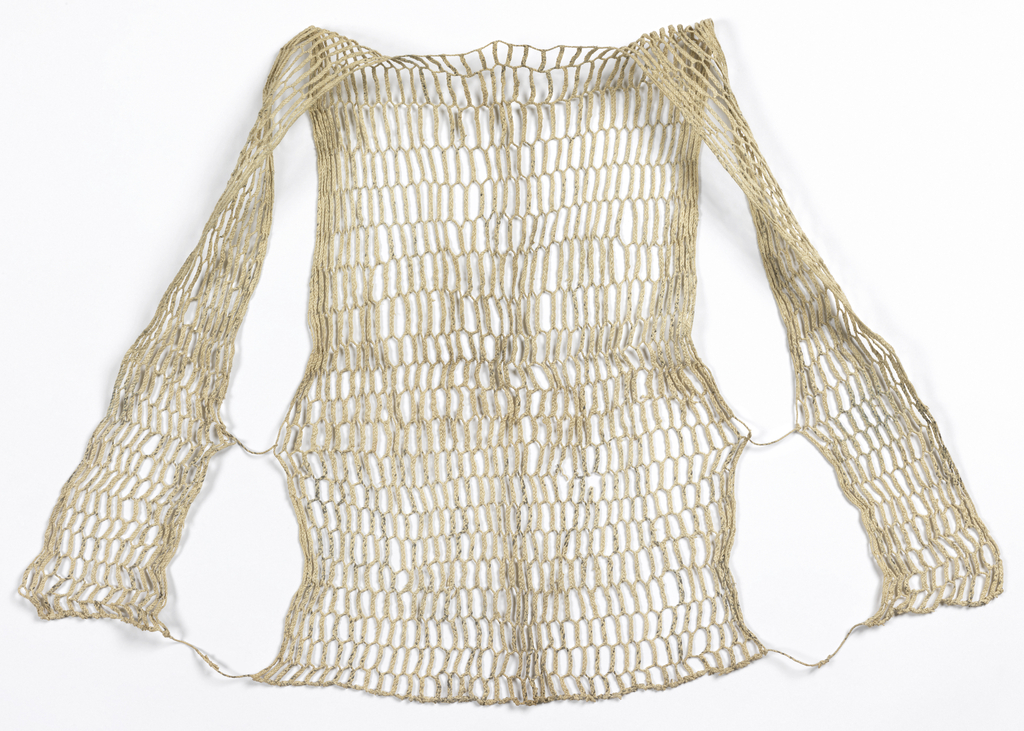Paper dresses of the 1960s are memorable but they are hardly innovative. Japan has been weaving with paper since at least the sixteenth century when woven paper– called shifu in Japanese – was most likely developed by the impoverished rural population for lack of other materials. With few raw materials available, farmers originally cut the pages of ancient account books in order to turn them into woven paper. The ink writing on the paper also remained visible in the finished fabric leaving an interesting speckled pattern. Soon this cloth attained a more prominent place in society as the Samurai refined the technique by means of sophisticated and elaborate folding, cutting and spinning processes, in which the finest threads could be manufactured and woven into noble cloths. These paper textiles were often used for ceremonial clothes, and in order to express their spirituality, the Samurai wrote prayers on the paper before turning it into yarns and cloth.
This particular example of shifu is an ase-hajiki or sweat-protector, which is a type of paper undergarment worn during summer to keep the wearer cooler in the heat. Because the paper layer was closest to the skin, it provided space for air to circulate between the skin and outer garment. Bamboo could also be used to make undergarments–certainly more durable than paper, but definitely lacking the softness of paper yarn.
